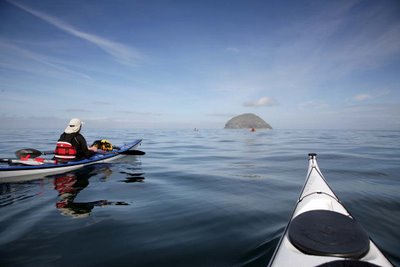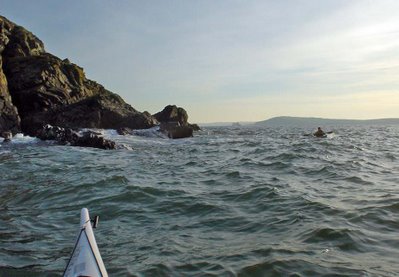
A particular feature of Scottish sea kayaking is being able to paddle right up under the walls of many of the great castles which are dotted round the coastline. In the past, the sea was the main transport artery for the people living around Scotland. Eilean Donan castle is strategically placed at the head of Loch Alsh where it splits into Loch Long and Loch Duich. The mouth of Loch Alsh faces the island of Skye so it has two exits to the sea through the tidal races of Kyleakin and Kylerea. The castle dates from 1230 but was destroyed by an English warship in 1719 when it was being held by the Jacobites. They wished to see the return of a Stuart king to the throne of Great Britain. The Jacobite garrison thought they were safe, protected from large warships by the powerful tidal races but a local pilot, sympathetic to the government, guided the warship to the castle. Its cannon reduced the ancient walls to rubble and it was not restored to its present state until 1932.
















